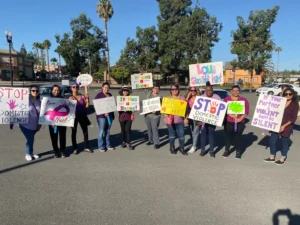Intersectionality has been gaining traction lately as a concept that provides insight into many different fields. Read on to find out exactly what intersectionality is and how it applies to the fight to end domestic violence.
What Is Intersectionality?
An intersectionality definition was first presented by law professor Kimberlé Crenshaw. She coined the term in 1989 and defined it as ““a prism for seeing the way in which various forms of inequality often operate together and exacerbate each other.” Intersectionality was originally developed as a concept for understanding inequalities faced by women. Termed “intersectional feminism,” the method of study focused on different levels of discrimination among women, and how certain aspects of their identity added more layers of inequality to their experience.
More recently, intersectionality theory has been expanded to look at stacked layers of inequality in all kinds of populations. These examinations give us extraordinary insight into societal issues, systemic inequality, and actionable steps for righting wrongs and overcoming injustice.
Today, the people at the Center for Intersectional Justice define intersectionality as “fighting discrimination within discrimination, tackling inequalities within inequalities, and protecting minorities within minorities.” Picking apart these compounded inequalities allows us to get a better understanding of how different subgroups are affected by various issues. Let’s take a closer look at how the theory of intersectionality applies to domestic violence.
Intersectionality and Domestic Violence
Intersectionality requires parsing the complex elements of our identities to understand the discrimination and inequalities that accompany each layer. Common identity elements include gender, race, ethnicity, disability, social class, sexual orientation, and more. Because these markers of our identities overlap, they can’t be fully understood in isolation. Instead, we need to examine how these aspects of ourselves interact to exacerbate risks and outcomes.
To understand these layers of inequality that may impact victims of domestic violence, we’ll first look at common risk factors for domestic violence. These often include:
-
Low self-esteem
-
Emotional dependence and insecurity
-
Unhealthy family relationships and interactions
-
Low academic achievement
-
Young age
-
Weak community sanctions against violence
-
Poverty and associated factors (e.g., overcrowding)
Applying intersectionality theory to this data, we can see how certain subgroups may be more at risk than others. For example, while youths may be more likely to experience domestic violence, a youth who is experiencing poverty and performs poorly academically would be even more vulnerable. In this way, we can see how aspects of our identities can overlap to make us more (or less) likely to experience certain hardships.
Intersectionality theory gives us further insight into the issue when we look at the relationship between domestic violence and homelessness.
Domestic Violence and Homelessness
Here are some homelessness and domestic violence statistics to help illustrate this complicated relationship:
-
Between 22% and 57% of all homeless women report that domestic violence was the immediate cause of their homelessness.
-
38% of all victims of domestic violence become homeless at some point in their lives.
-
Over 90% of homeless women have experienced severe physical or sexual abuse at some point in their lives, and 63% have been victims of intimate partner violence as adults.
-
Over 80% of survivors entering shelters identified “finding housing I can afford” as a need, second only to “safety for myself” (85%).
-
Abusers commonly sabotage a victim’s economic stability, making victims more vulnerable to homelessness. Many victims and survivors of domestic violence have trouble finding rental properties because they may have poor credit, rental, and employment histories as a result of their abuse.
These figures show us that domestic violence and homelessness can often be a vicious cycle in which each reinforces the other. Considering intersectionality theory, the factor of experiencing homelessness can therefore be a layer of inequality disproportionately affecting those suffering from domestic violence.
This highlights the need for crisis response services to address homelessness and the related risk factors in order to effectively tackle domestic violence. According to intersectionality theory, you cannot fully address one without addressing the other. This is why it’s crucial for crisis response services to be aware of and account for stacked inequalities.
For example, recent studies show that “Permanent Housing programs … accept referrals of Black people at a disproportionately lower rate to their representation in the homeless service system.” Since, as we’ve seen, victims of domestic violence often also face disproportionate access to housing, intersectionality theory tells us that a Black victim of domestic violence faces discrimination on two overlapping levels.
Acknowledging these multiple levels of discrimination enables crisis response services and others to tackle problems from multiple angles. Individuals, organizations, communities, and policies can therefore more effectively address the plight of those in need. With a multifaceted and strategic approach, we can promote change and empowerment!
En Crisis House, estamos aquí durante estos momentos estresantes para apoyar a las familias con nuestros servicios y recursos. Ofrecemos intervención en crisis, de transición y vivienda permanente, y servicios para familias y niños que huyen de la violencia doméstica. Somos líderes en servicios críticos en East County, San Diego, administrando programas para individuos y familias que experimentan violencia doméstica y personas sin hogar.
Véase nuestro impacto y Ayúdanos llegar a los necesitados donando o voluntariado ¡hoy! También puede suscríbase a nuestro boletín para estar al tanto de cómo trabajamos para poner en contacto a familias, niños y personas con recursos cruciales. Juntos, podemos detener el ciclo de la violencia doméstica, el maltrato infantil y la falta de vivienda, y capacitar a las personas para que renueven sus vidas.







